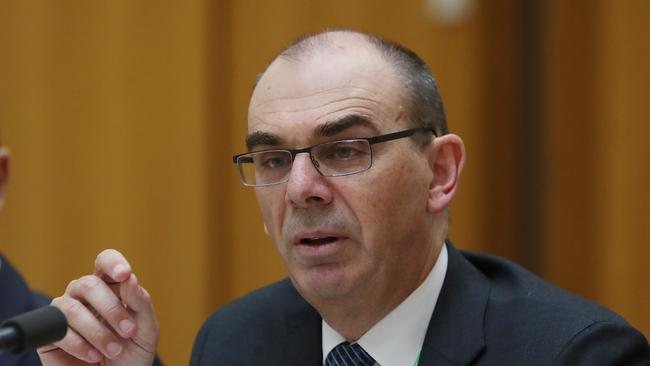APRA cautions banks on lending
The prudential regulator has set a September deadline for banks to have the systems in place to implement macroprudential measures.

The nation’s prudential regulator has warned major banks that they must have the systems in place by September to implement any regulatory policy to limit growth in home loans to heavily indebted borrowers.
In a letter on Tuesday, Australian Prudential Regulation Authority chairman Wayne Byres said the new requirements were designed to strengthen the enforceability of future macroprudential policy responses to financial stability risks.
“In the current environment, with high household indebtedness and rising interest rates, it’s essential for banks to prudently and proactively manage risks in residential mortgage lending,” Mr Byres said. “APRA expects lenders to closely monitor housing lending risks to ensure that aggregate portfolio risks remain within their risk appetite and that standards for new lending remain prudent.”
The changes, to be implemented through an attachment to a prudential standard on credit risk, will come into effect from September. They follow the release by the regulator this week of data concerning risky residential mortgage loans for the March quarter, which showed that loans with debt-to-income ratios of more than six increased to 23.1 per cent, up from 18.9 per cent a year ago.
Mr Byres said in his letter that APRA had received a number of submissions seeking a commitment from the regulator to further public consultation ahead of any future macroprudential policy measures.
Banks, he said, would be given notice of APRA’s concerns in the lead-up to policy interventions.
The attachment also clarified that banks would be given a month’s notice of the planned implementation of any lending limits. “This is broadly consistent with APRA’s recent approach to increasing banks’ serviceability buffers,” Mr Byres wrote.
“Prior engagement with the Council of Financial Regulators would also be an essential prerequisite for initiating any macroprudential policy response … (this ensures) alignment, among financial regulators, on the assessment of the risk outlook and the need for a macroprudential policy response.”
APRA rejected further submissions from the banks for carve-outs for certain types of loans from the reforms.
Some lenders had argued that construction loans should be excluded from any future limits on high debt-to-income lending, given their role in contributing to housing supply and economic activity. Others had suggested that first home buyers should be excluded from prescribed loan-to-valuation ratios.
The regulator responded that it would consider the broader impacts of options with the Council of Financial Regulators at the time, taking into account the risks that were being targeted, possible unintended consequences and alternative options.
“However, narrowing options today with specific carve outs, when future risks are not known, could reduce the effectiveness of APRA’s macroprudential policy toolkit,” he said.



To join the conversation, please log in. Don't have an account? Register
Join the conversation, you are commenting as Logout